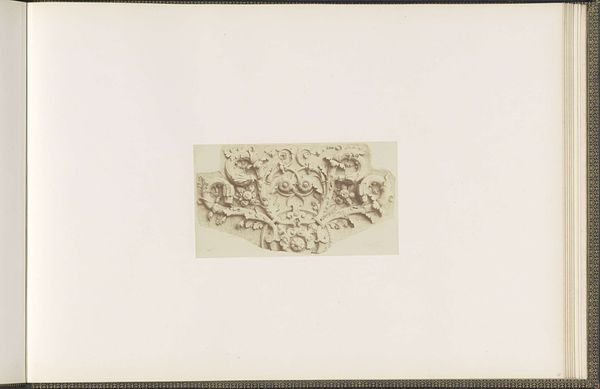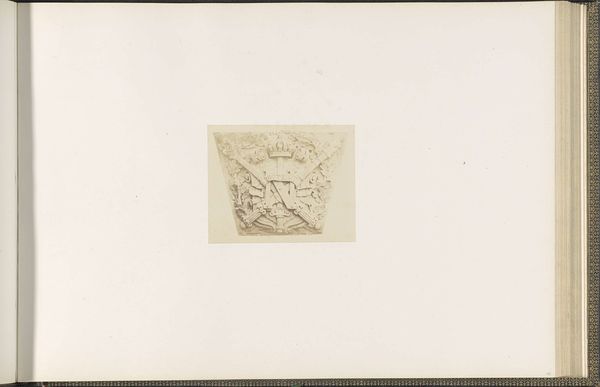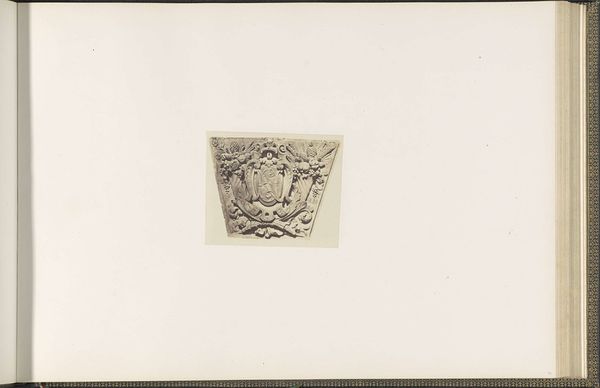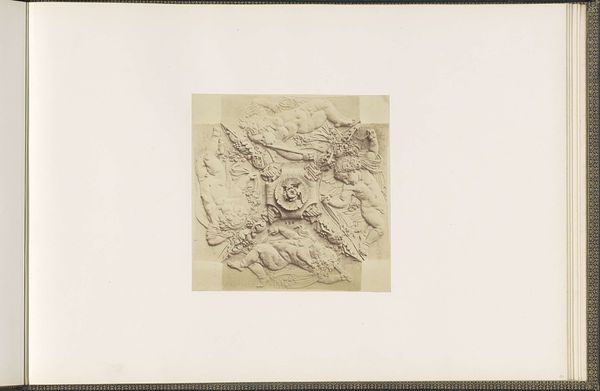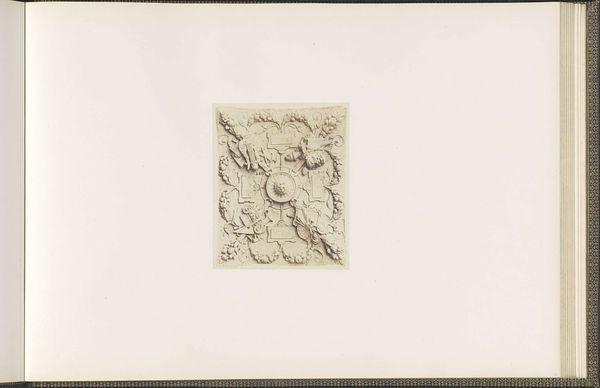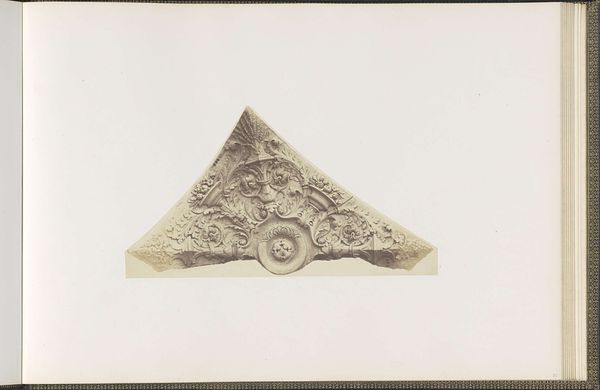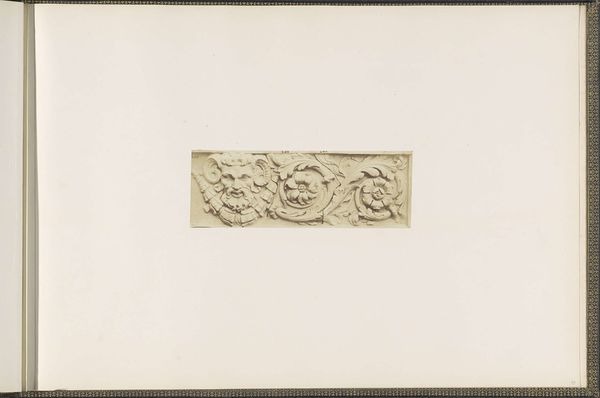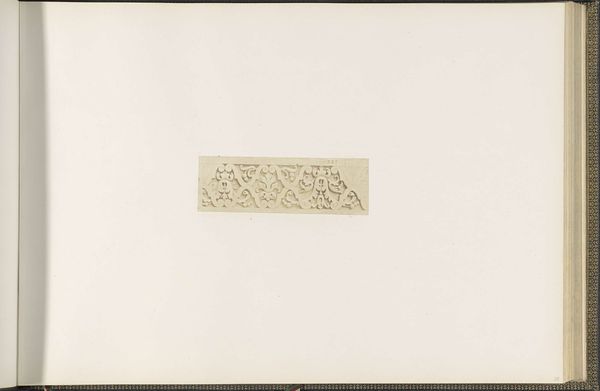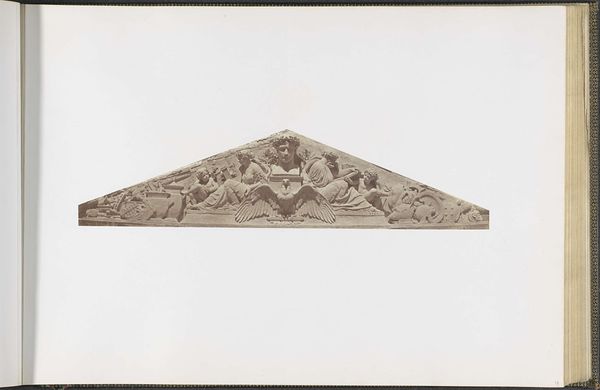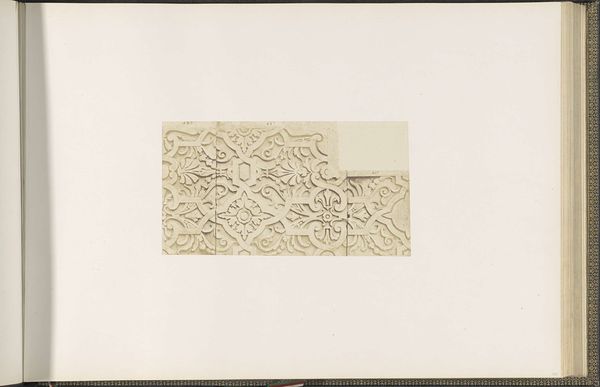
Gipsmodel voor een versiering van het Palais du Louvre c. 1855 - 1857
0:00
0:00
edouardbaldus
Rijksmuseum
print, relief, photography, collotype
#
neoclacissism
# print
#
relief
#
photography
#
collotype
#
history-painting
Dimensions: height 376 mm, width 523 mm
Copyright: Rijks Museum: Open Domain
Editor: Here we have Edouard Baldus’s "Gipsmodel voor een versiering van het Palais du Louvre," a collotype print from around 1855-1857. It's currently held at the Rijksmuseum. The level of detail is incredible. What strikes me is the composition and the interplay of light and shadow on this fragment. How do you approach analyzing this type of architectural relief? Curator: Formally, the arrangement showcases a deliberate bilateral symmetry. Observe how the mirrored groupings of vegetal forms flank a central motif, itself internally symmetrical. The curvature of the foliage elements create counter-movements, establishing a dynamic tension within the static medium of the print. Have you noticed the implied weight distribution within the relief? Editor: I do now! It almost feels as though there’s an implied downward pull, balanced by the upward striving of the central leafy element. What do you make of the texture captured in the photograph, in relation to its original physical qualities? Curator: The collotype process heightens the texture of the gesso. We are not just seeing an image, we are experiencing a simulation of the tactile, creating an aesthetic encounter mediated by the print itself. This play between reality and representation is a key aspect. How does this mediation shape your understanding of the object’s function as a model? Editor: That’s fascinating! I hadn't considered how the print *itself* contributes to the viewing experience. I see the texture as creating a new way of thinking about architectural form and its purpose. Curator: Precisely. Baldus's mastery doesn’t only reside in faithful documentation, but in exploiting photography’s capacity to transform perception through altered textural representation and light conditions. A testament to structural formalism indeed. Editor: I appreciate your perspective. Considering this artwork through the lens of texture and representation adds another level of meaning to this neoclassical model. Thank you!
Comments
No comments
Be the first to comment and join the conversation on the ultimate creative platform.
